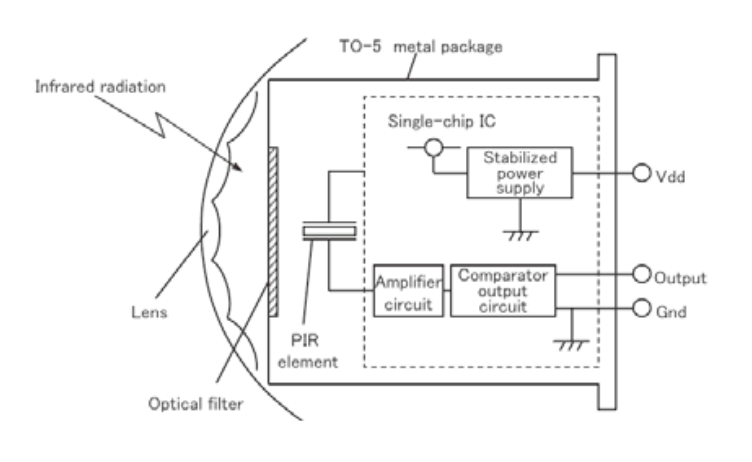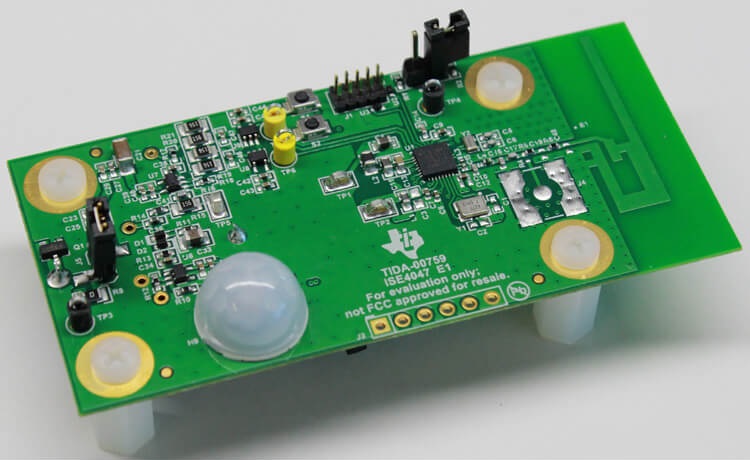A 3.3V PIR sensor for low power or battery based applications is hard to find, for some reason. Modules that you find out there for Arduino are not exactly low power and use low cost Chinese LDO chips for regulating 5V down to 3.3V.
There are ways to modify the low cost PIR sensors to bypass the LDO and run them off 3.3V. While that could work for prototyping, it is not usable for anything “low power” because of certain issues we discuss below.
The issue with most 3.3V PIR sensors
You might have a PIR module that works on 3.3V but that is not enough for most applications. Especially where you need to operate out of a battery pack.
- High quiescent current of ~50uA: Yes, that is too high for battery powered applications. Batteries will not last for long enough.
- Battery incompatible operating voltage range: If the module has a voltage range of 3.0 to 3.6V, which is typical of many 3.3V PIR sensors, you have a problem. You cannot use a coin cell or a 2xAA battery pack because they discharge down to 2V. Most 3V batteries or cells will discharge down to 1.8V by the time they are exhausted.
LiPo cells go over 3.7V when they are fully charged. This means you cannot use any battery system directly with your sensor. You will need some kind of voltage regulator – which causes huge loss of battery life due to inefficiency at low current. - Design complexity: If you end up making a low power PIR sensor with a suitable operating range, it often ends up using nano-power opamps. Because of the ultra low current involved, the circuits can be expensive and sensitive to EMI. Even though it does allow the power consumption to go under 2uA if designed the right way (will last 8+ years on a CR2032 coin cell!).
Low Power PIR design options
You have two options for getting power consumption down to 10uA or lower.
We can broadly divide PIR modules into 3 categories based on power consumption in standby mode (standby mode is when the sensor is waiting for activity to be detected):
- Ultra Low Power (< 2uA)
- Low Power (< 10uA)
- Everything else
For battery based applications, you would need a 3.3V PIR sensor which has an operating range from 2V to 3.6V, or something similar. It must at least be a low power sensor from the first two categories to make a small battery last long enough.
Low power smart 3.3V PIR sensor chips
This is probably the most cost effective and also the easiest way out to get power consumption of under 10uA.
There are off-the-shelf modules available like the Panasonic EKMA1301112 with power consumption as low as just 6uA in standby mode, and operates down to just 2V.
These smart and highly integrated sensors contain an amplifier, a DSP core and a few other components inside the metal can PIR sensor package itself. This makes the sensor very noise immune as well.

The high SNR also allows detection of PIR voltage down to 2uV, which is very difficult to do with external processing circuits.
Full custom ultra-low power PIR sensor design
A full custom ultra low power design consists of a nano-power op-amp that serves as stages for amplification, filtering and window comparator design.
The Texas Instruments Design note explains in great detail a design based on a TI op-amp.

A full custom design takes a lot of R&D and does cost quite a bit per unit to manufacture. But it is the best way to achieve the lowest possible power consumption characteristics of under 2 micro amps.
References
Reference 1: Panasonic PaPIRS series datasheet
Reference 2: TI low power PIR reference design